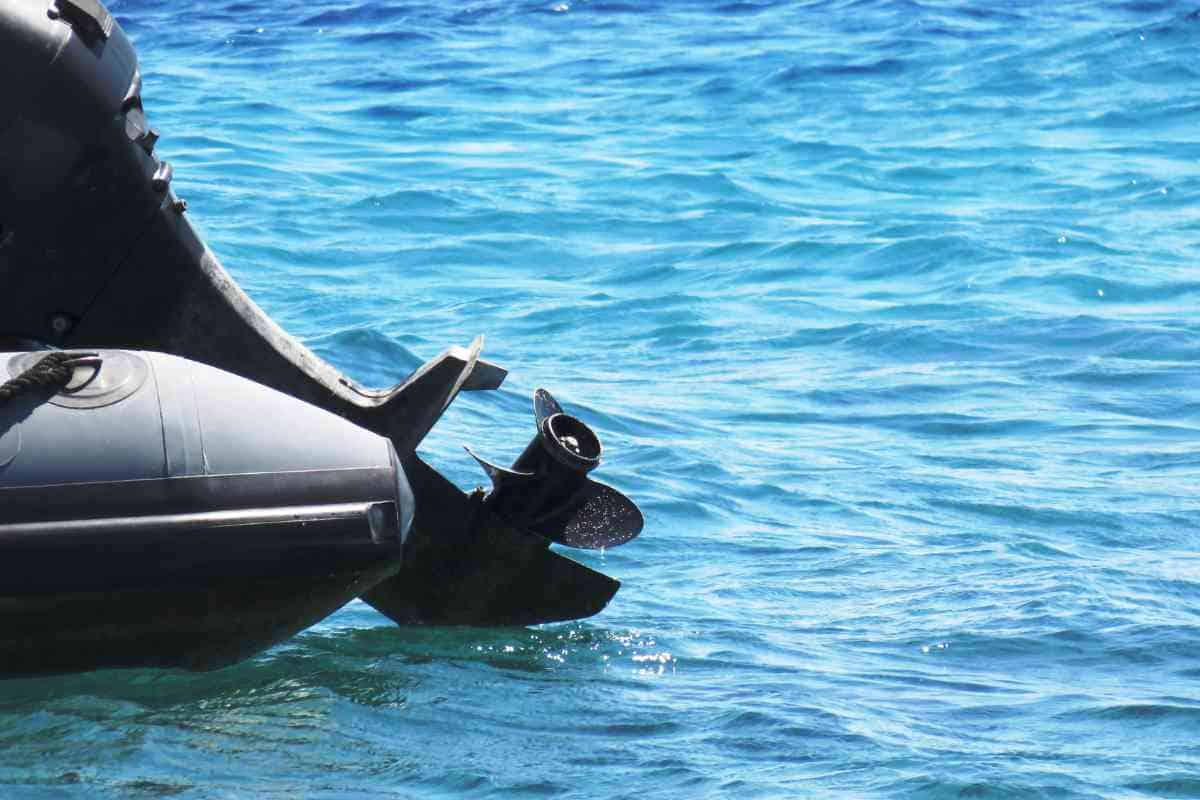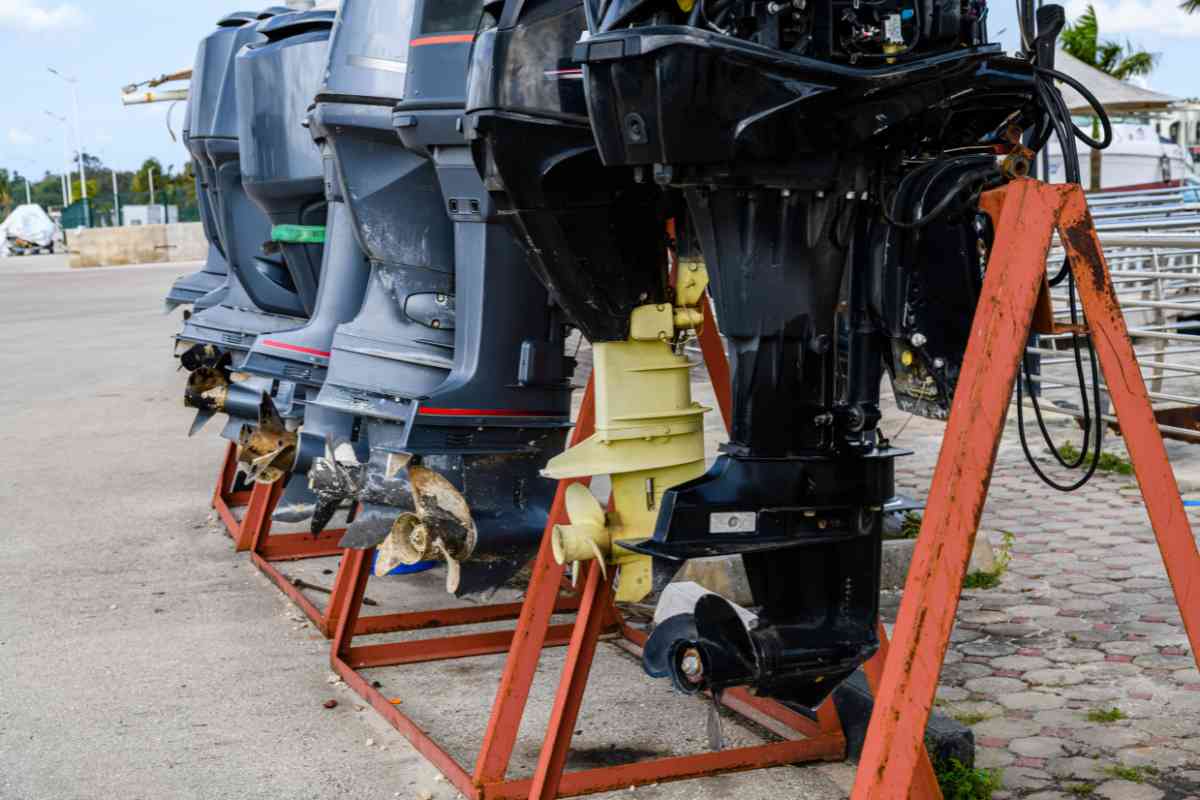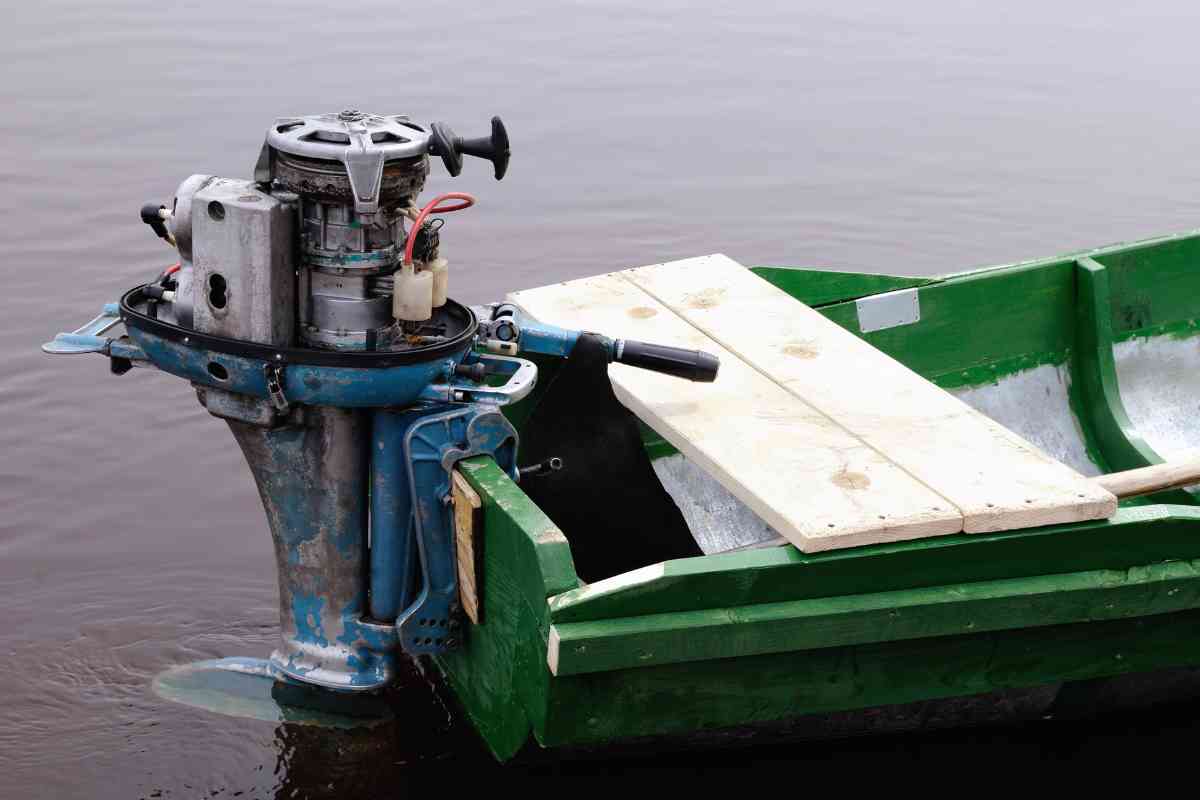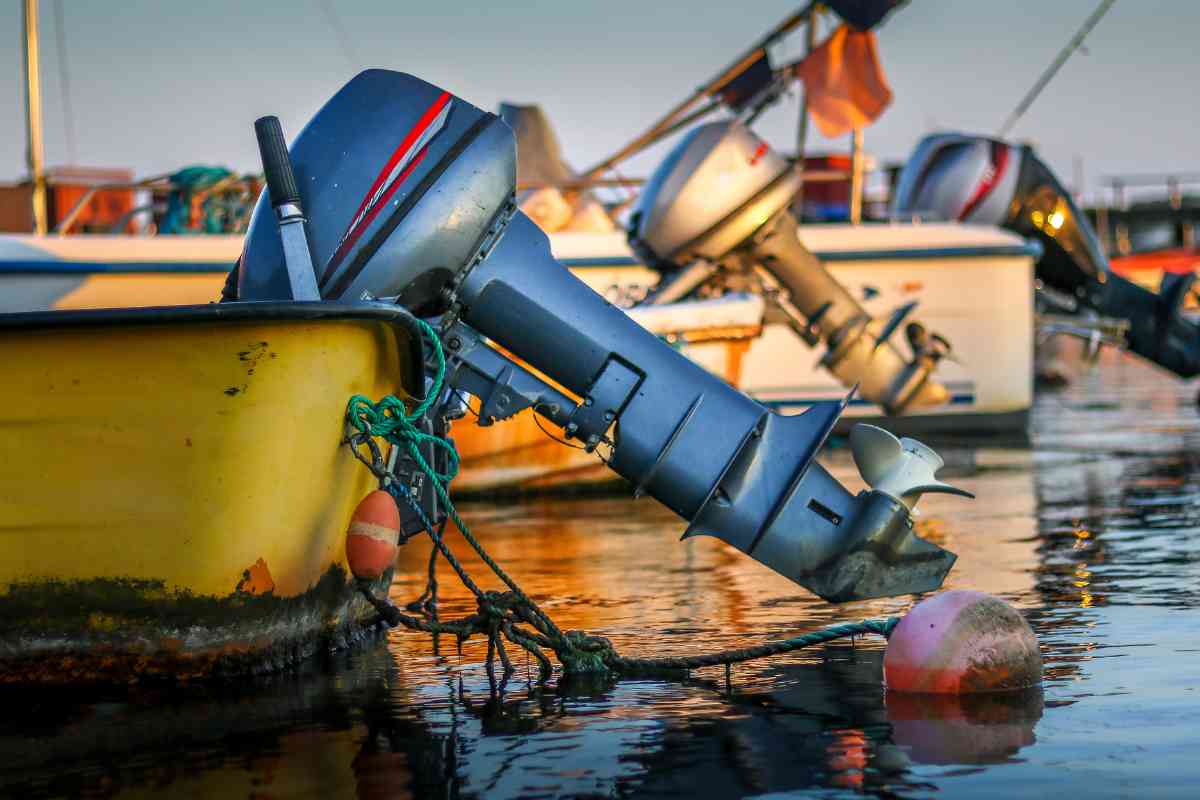Saltwater vs. Freshwater Outboard Motor: Understanding the Key Differences
An outboard motor is a key part of any boat, and choosing the right one for your needs is important. When it comes to selecting an outboard motor, one of the key considerations is whether to go for a saltwater or freshwater motor. While both types of motors may look similar, there are some important differences to consider.

What’s the difference between a saltwater outboard motor and a freshwater outboard motor?
The main difference between saltwater and freshwater outboard motors is the materials used in their construction. Saltwater motors are designed to withstand the harsh environment of the ocean, including the corrosive effects of saltwater. Freshwater motors may use less expensive materials, such as cast iron, that are not as resistant to corrosion.
An outboard motor is essential for many boat enthusiasts. However, picking the right one is crucial, especially when debating between saltwater and freshwater options. While they may appear similar, the underlying differences between them can influence your decision.
Key Differences in Materials
Saltwater Outboard Motors
- Built for the demanding saltwater environment.
- Made of corrosion-resistant materials like stainless steel.
- Often equipped with larger sacrificial anodes to combat corrosion.
Freshwater Outboard Motors
- Tailored for the milder environments of lakes and rivers.
- Typically constructed with cost-effective materials like aluminum.
- Might have smaller or no sacrificial anodes.
When choosing your outboard motor, it’s essential to consider where you’ll mostly be boating. Knowing the differences between these two types will ensure you make a decision that best suits your needs.

Understanding Outboard Motors: Freshwater vs. Saltwater
Outboard motors, whether for freshwater or saltwater, have unique design elements to match their intended environments. Here’s a detailed comparison between the two:
Key Differences Between Freshwater and Saltwater Outboard Motors
- Materials:
- Saltwater Motors: Usually built using corrosion-resistant materials like stainless steel.
- Freshwater Motors: Typically crafted from cost-effective, less corrosion-resistant materials like aluminum.
- Sacrificial Anodes:
- Saltwater Motors: Possess larger and robust sacrificial anodes for corrosion protection.
- Freshwater Motors: Generally have smaller anodes, with some models lacking them.
- Maintenance:
- Saltwater Motors: Require more frequent upkeep due to their challenging environment.
- Freshwater Motors: Need less maintenance in comparison.
- Corrosion Risk:
- Prolonged use of a freshwater motor in saltwater can increase corrosion risks, whereas a saltwater motor offers limited benefits in freshwater.

Deep Dive: Corrosion Differences
Corrosion is the primary distinction between these two types of motors, predominantly influenced by the water they operate in.
- Saltwater Corrosion:
- Saltwater accelerates metal corrosion due to its high salt content and marine bacteria. The moisture-laden sea air further speeds up the process.
- To counteract this, saltwater motors emphasize anti-corrosive materials and more extensive use of sacrificial anodes.
- Galvanic Corrosion:
- When different metals touch in saltwater, galvanic corrosion can occur. The more reactive metal corrodes faster.
- Saltwater motors employ anodes, usually made of zinc or aluminum, and isolation materials to prevent this type of corrosion.
- Corrosion Resistance:
- Saltwater motors prioritize corrosion resistance and might be pricier as a result. In contrast, freshwater motors, while more affordable, might not fare well in saltwater.
Material Insights: Building Robust Outboard Motors for Saltwater
Selecting the right materials for outboard motors is pivotal for their longevity and optimal performance, especially when used in saltwater settings. Here’s a detailed look into the prime materials involved:
Aluminum vs. Stainless Steel
- Aluminum:
- Widely employed in freshwater outboard motors.
- Can corrode rapidly in saltwater, affecting durability and performance.
- Stainless Steel:
- Preferred for saltwater motors due to its higher corrosion resistance.
- Offers an extended lifespan and better performance in marine conditions.
The Role of Sacrificial Anodes: Zinc & Magnesium
Sacrificial anodes are metals that bear the brunt of corrosion, protecting the vital parts of boats and motors.
- Zinc:
- Commonly chosen for its reactive nature, corroding in place of essential boat or motor parts.
- Regular checks are essential to ensure it’s still offering protection.
- Magnesium:
- While it’s more reactive than zinc, it’s less popular.
- Might corrode too swiftly, requiring more frequent replacements.
Regular maintenance, including periodic inspection and replacement of sacrificial anodes, is paramount in saltwater settings to keep your motor in prime condition.
Understanding Outboard Motor Cooling Systems

The cooling system is an integral component of outboard motors, ensuring they run efficiently and avoid overheating. Let’s delve into the two primary cooling systems used in outboard motors and explore their distinct features.
Raw Water Cooling
- Function: Raw water cooling systems draw water directly from the surrounding environment, channel it through the engine to absorb the heat, and then release it back into the water.
- Used in: Primarily in saltwater outboard motors.
- Pros:
- Straightforward and common system.
- Cons:
- Risk of corrosive scale buildup in the engine when temperatures exceed 140°F, due to salt content.
- Potential for water flow restrictions leading to overheating.
- Maintenance Tip: Flushing the engine with freshwater post-saltwater use can help mitigate scale buildup and prolong engine life.
Freshwater Cooling
- Function: This closed-loop system utilizes treated freshwater to cool the engine. After absorbing engine heat, the freshwater passes through a heat exchanger, transferring the heat to raw water, which is then released back into the environment.
- Used in: Freshwater outboard motors.
- Pros:
- Reduced risk of corrosion and scale buildup.
- Allows for consistent engine temperatures, potentially enhancing performance and fuel efficiency.
- Cons:
- More intricate and costly setup compared to raw water cooling.
The choice between raw water and freshwater cooling systems hinges largely on the intended environment for the outboard motor, whether it’s saltwater or freshwater. Both systems present their unique sets of benefits and challenges. It’s essential to factor in these considerations and prioritize regular maintenance to maximize the efficiency and longevity of your outboard motor.

Understanding the Influence of Water Types on Boat Engines and Components
For boat enthusiasts, the thrill of sailing on open waters is unparalleled. However, beneath the surface, the kind of water you’re navigating—saltwater or freshwater—has significant repercussions on your boat’s engine and its components. Here’s a deep dive into understanding these effects.
The Corrosion Conundrum
- Saltwater’s Challenge: With high salt content, saltwater accelerates the corrosion process. Saline water, combined with oxygen, accelerates the oxidation process, leading to rusting.
- Most Vulnerable Parts:
- Propeller: A primary contact point with water.
- Shaft: Essential for driving the propeller.
- Exhaust: An exit point for engine waste.
- Bilge Pump: Crucial for draining excess water from the boat.
Cooling Mechanisms: Combatting Corrosion
- Closed Cooling Systems:
- Working: It operates as a sealed system, cooling the engine with treated freshwater, thereby preventing direct exposure to corrosive external water.
- Advantage: Provides consistency in engine temperature, which promotes better engine performance and durability.
- Raw Water Cooling:
- Working: Directly uses water from the boat’s environment, whether saltwater or freshwater, to regulate engine temperature.
- Risks: Direct saltwater exposure can hasten scale formation inside the engine, potentially causing blockages and overheating.
Sacrificial Saviors: Anodes
- Purpose: These devices willingly take one for the team! Made of metal, they’re designed to corrode in place of the engine’s more vital parts.
- Application: They’re indispensable for saltwater boats, offering an extra protective layer against the aggressive corrosive effects of saline waters.
The Maintenance Mandate
Regular checks and care routines are non-negotiables, irrespective of the water type your boat plies in:
- Oil Check & Replacement: Ensures the engine runs smoothly and reduces wear.
- Propeller and Shaft Inspection: Helps identify early signs of wear or corrosion.
- Cooling System Scrutiny: Regularly checking for scale buildup or signs of corrosion ensures that the system operates efficiently.
Key Points to Remember
When selecting between saltwater and freshwater outboard motors, a couple of critical aspects stand out: the boat’s hull configuration and the use of cathodic protection mechanisms.
Understanding Hull Configuration
Freshwater boats are commonly crafted with hull patterns and fins that are suited for relatively calm shores and flat wave conditions.
Conversely, boats meant for saltwater are tailored to navigate the challenges of turbulent waters and are built to endure the harsher sea environment. In essence, the hulls of saltwater boats are constructed to be tougher and more resilient, especially against the corrosive nature of saltwater.
The Role of Cathodic Protection
Controlling the corrosion of metallic parts submerged in saltwater is a challenge. Given the pronounced corrosive nature of saltwater, thanks to its elevated salt levels, it’s imperative to employ cathodic protection strategies. These techniques safeguard a boat’s metal components, inclusive of the outboard motor, from corrosive damage.
A notable system employed for cathodic protection on boats is the Mercathode system. This ingenious system deploys a minor electrical current to shield the metal parts of the boat from corrosion. Its effectiveness is particularly pronounced in salt-infested waters where corrosion tends to be a pressing concern.
Final Thoughts
Drawing our discussions to a close, it’s evident that stark distinctions exist between outboard motors designed for saltwater and those tailored for freshwater. While their basic structure might appear similar, the choice of materials and specialized features embedded within them play pivotal roles in dictating their efficiency and lifespan.
A primary point of divergence between the two motor types lies in their material composition. Engines meant for saltwater voyages often favor the resilience of stainless steel over aluminum, a nod to their efforts to stave off saltwater’s corrosive touch. This choice undeniably pushes up their cost but fortifies their durability. On the other hand, freshwater motors might either omit anodes or employ smaller ones, potentially speeding up their degradation.
Maintenance frequency emerges as another key consideration. Owing to their grueling operating conditions, saltwater motors beckon for more diligent care compared to their freshwater counterparts. Ensuring meticulous upkeep can significantly boost the motor’s longevity and maintain its peak performance levels.
Frequently Asked Questions
Can a saltwater outboard motor be used in freshwater?
Yes, a saltwater outboard motor can be used in freshwater. However, it is important to properly clean and maintain the motor after each use in saltwater to prevent corrosion.
What are the differences between saltwater and freshwater boats?
One of the most important differences between saltwater and freshwater boats is the mercathode system. Saltwater boats require this cathodic protection system to prevent corrosion. Additionally, saltwater boats may have different materials used in their construction, such as stainless steel instead of aluminum.
What is the best type of boat for both saltwater and freshwater?
There is no one-size-fits-all answer to this question. It depends on personal preference and intended use. Some boats are designed specifically for saltwater use, while others are designed for freshwater use. It is important to consider the body of water you will be using the boat in and choose a boat that is appropriate for those conditions.
What should be considered when buying a saltwater boat for freshwater use?
When buying a saltwater boat for freshwater use, it is important to consider the materials used in the boat’s construction. Saltwater boats may have more corrosion-resistant materials, which may not be necessary for freshwater use. Additionally, the mercathode system may not be necessary for freshwater use.
What are the benefits of a Mercury saltwater outboard motor?
Mercury saltwater outboard motors are designed specifically for use in saltwater conditions. They have corrosion-resistant materials and a robust mercathode system to protect against corrosion. Additionally, they are designed to provide reliable performance in harsh saltwater conditions.
Can a freshwater outboard motor be used in saltwater?
Yes, a freshwater outboard motor can be used in saltwater. However, it is important to properly clean and maintain the motor after each use in saltwater to prevent corrosion. Additionally, freshwater motors may not have the same level of corrosion resistance as saltwater motors.
